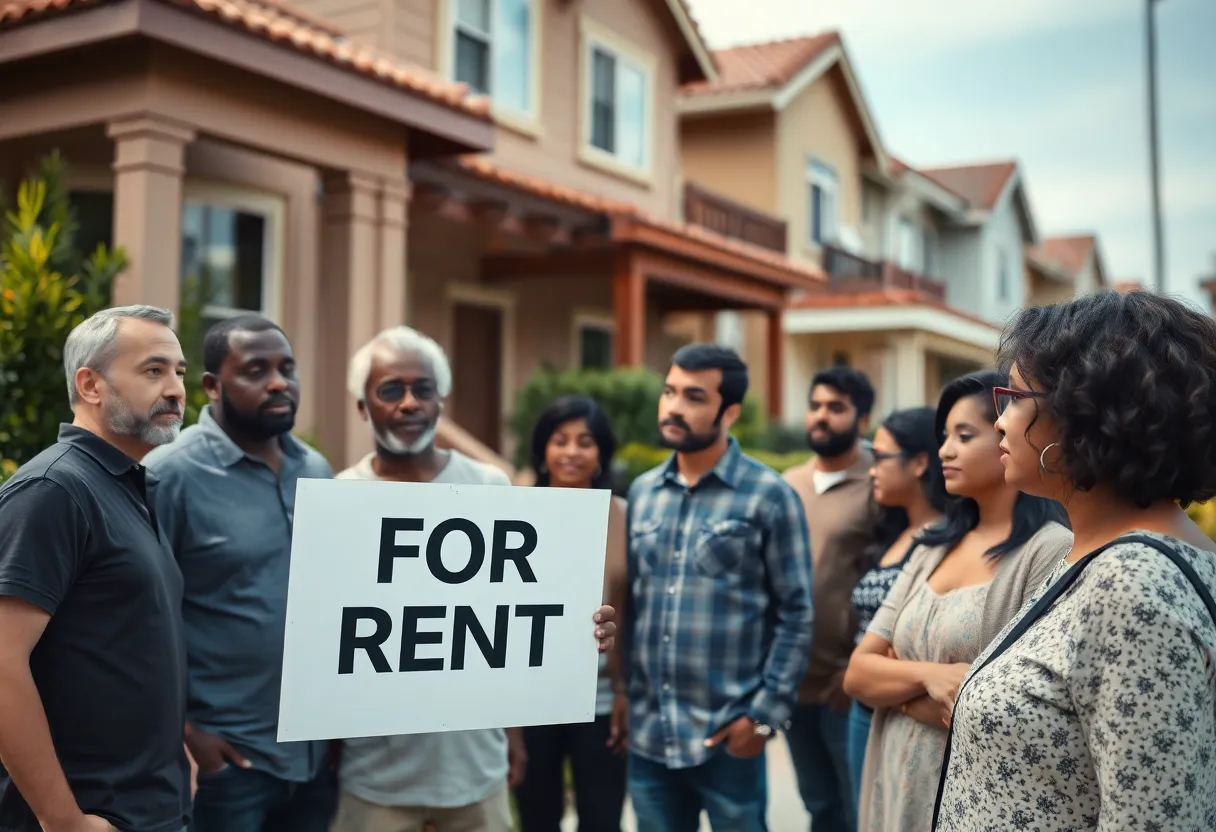News Summary
California’s low-income housing eligibility has surged due to rising living costs. Many residents, including those with six-figure incomes, now qualify for affordable housing, highlighting ongoing affordability issues. Regions like Santa Clara and Los Angeles County have seen significant increases in income thresholds. However, challenges remain, with funding cuts proposed at the federal level threatening rental assistance programs. The state urgently needs billions to advance housing projects while facing delays in affordable housing developments from funding constraints and regulatory issues.
California is experiencing a significant surge in the eligibility requirements for low-income housing amidst escalating living costs throughout the state. Recent data compiled by the California Department of Housing and Community Development reveals that many residents who earn six-figure salaries now qualify for affordable housing programs, highlighting the financial pressures residents face to secure adequate living conditions.
In Santa Clara County, the low-income eligibility threshold for individuals has risen by 8.8%, now set at $111,700. San Francisco and San Mateo Counties have maintained their low-income eligibility at $109,700. In regions like Sacramento, Placer, and El Dorado counties, a one-person household with an income of $72,050 qualifies as low-income, reflecting an 8.7% increase from last year. Meanwhile, in Los Angeles County, the threshold has climbed to $84,850, and San Diego County is set at $92,700, both also experiencing an 8.8% increase. San Joaquin County has established its low-income level at $58,600, with Stanislaus County at $55,200.
As housing costs relentlessly rise, professionals in the finance sector, like home loan brokers, assert that the increasing income eligibility offers more residents the opportunity to apply for income-based loan programs. Despite these adjustments, high living expenses such as rent and food continue to make housing affordability complex for many Californians, contributing to frustrations among prospective renters. New residents have expressed particular concern over finding affordable housing amid these steep price hikes.
Compounding the challenge of securing affordable housing is the reality that many low-income housing programs are currently hindered by extensive wait lists or insufficient funding necessary to meet demand. Recent proposals from the federal government threaten to exacerbate this situation. The Trump administration’s proposed 2026 budget includes a suggestion to cut funding for federal rental assistance by approximately 43%. This would potentially impact significant programs such as public housing and Section 8, raising alarms among critics who fear it will deepen California’s housing affordability crisis and contribute to a rise in homelessness.
Nationwide, around 5 million households depend on federal rental assistance, including an estimated 560,000 households located in California. The proposed funding adjustments suggest a shift toward a block grant system for states to manage these resources, which raises concerns regarding the distribution and accessibility of assistance, particularly for working-class families.
Efforts to establish affordable housing developments are also feeling the pinch. Proposed projects face delays due to funding constraints and regulatory issues. For instance, a proposal for affordable housing in Woodside was blocked by Caltrans, citing environmental concerns related to rare wildflower species in the area. According to a report by Enterprise Community Partners, nearly 45,000 affordable housing units are currently on hold in California due to insufficient funding.
The urgency for solutions is mounting, with estimates indicating that the state will require $1.79 billion in subsidies and $574 million in tax credits to successfully advance affordable housing development projects. This urgency has increased due to recent wildfires in Southern California that have highlighted existing vulnerabilities in the housing market.
Despite the pressing need for affordable housing solutions, the current California budget proposal fails to allocate necessary funds toward critical homelessness and affordable housing initiatives, casting doubt on the future landscape of housing affordability in the state.
Deeper Dive: News & Info About This Topic
- CBS News: California Affordability Crisis
- Los Angeles Times: Proposed Cuts to Federal Rental Assistance
- San Francisco Chronicle: Housing Proposal Blocked
- Housing Finance: Affordable Housing Pipeline Stalled
- Globe Newswire: Affordable Housing Fund Closure
- Wikipedia: Housing in California

Author: STAFF HERE SAN DIEGO WRITER
The SAN DIEGO STAFF WRITER represents the experienced team at HERESanDiego.com, your go-to source for actionable local news and information in San Diego, San Diego County, and beyond. Specializing in "news you can use," we cover essential topics like product reviews for personal and business needs, local business directories, politics, real estate trends, neighborhood insights, and state news affecting the area—with deep expertise drawn from years of dedicated reporting and strong community input, including local press releases and business updates. We deliver top reporting on high-value events such as Comic-Con International, San Diego County Fair, and San Diego Pride Festival. Our coverage extends to key organizations like the San Diego Regional Chamber of Commerce and United Way of San Diego County, plus leading businesses in biotechnology, healthcare, and technology that power the local economy such as Qualcomm, Illumina, and Scripps Health. As part of the broader HERE network, including HEREAnaheim.com, HEREBeverlyHills.com, HERECostaMesa.com, HERECoronado.com, HEREHollywood.com, HEREHuntingtonBeach.com, HERELongBeach.com, HERELosAngeles.com, HEREMissionViejo.com, and HERESantaAna.com, we provide comprehensive, credible insights into California's dynamic landscape.





